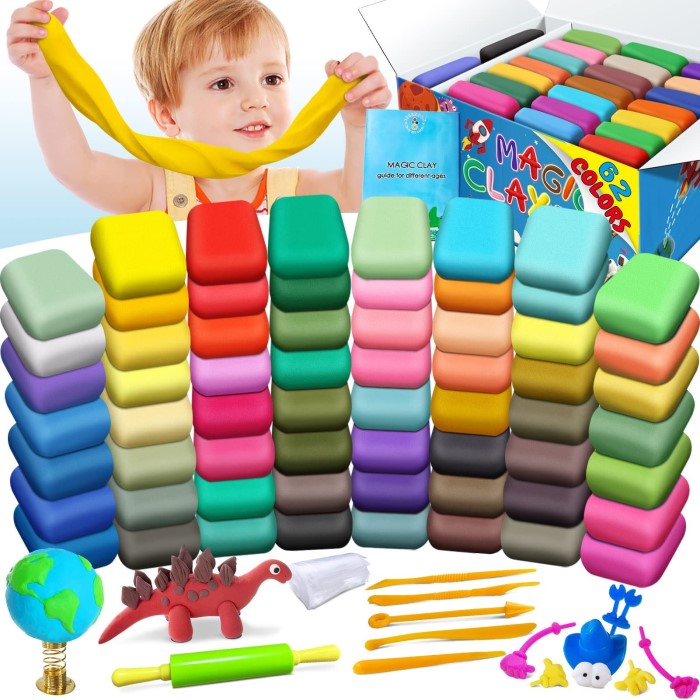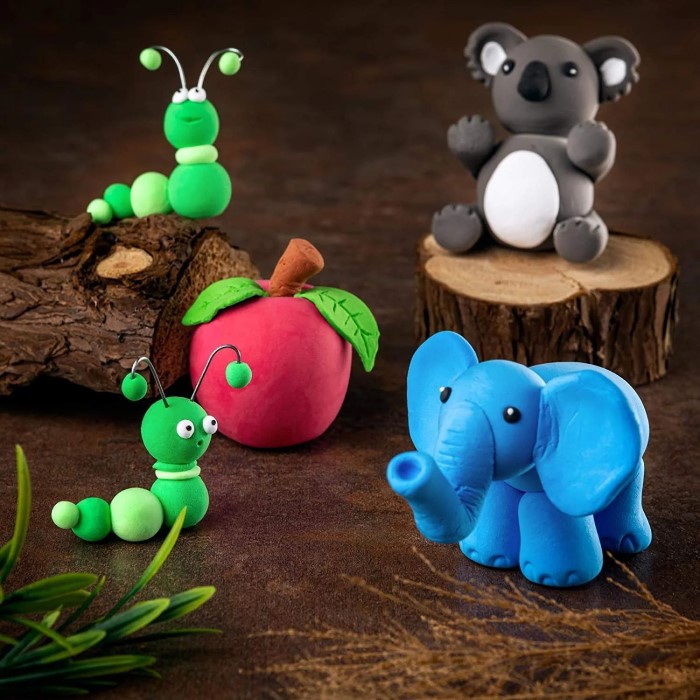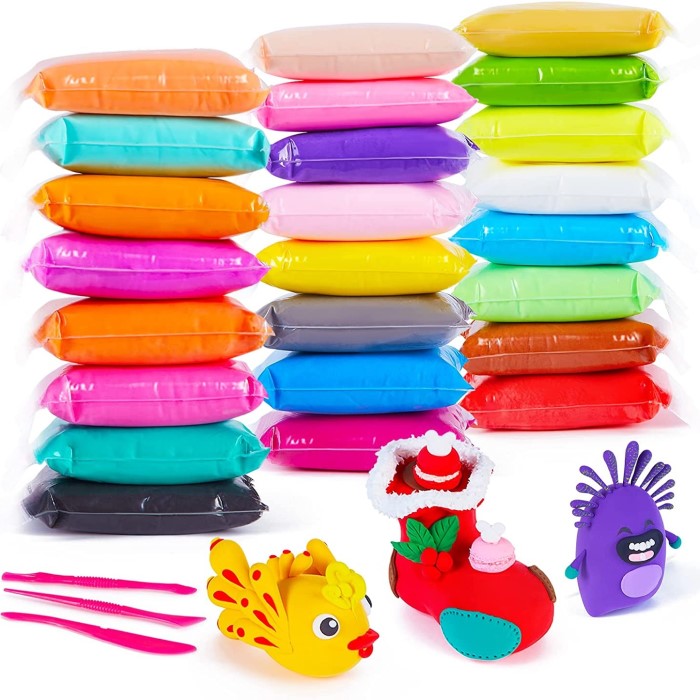Introduction
When it comes to children’s creative play, few products captivate attention like modeling clay for kids. This versatile crafting material not only sparks imagination but also provides endless opportunities for artistic expression. Whether sculpting vibrant animals or intricate designs, kids can learn and grow through their creations. Additionally, using modeling clay contributes to the development of fine motor skills, hand-eye coordination, and problem-solving abilities. In this comprehensive guide, we will explore fun projects to inspire creativity, discuss the various types of modeling clay available, and provide tips to ensure a safe and enjoyable experience for all.
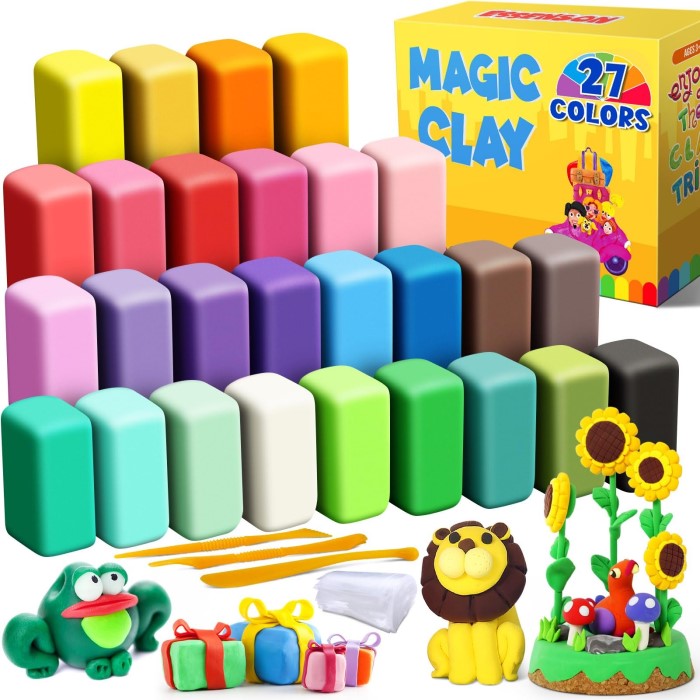
Benefits of Using Modeling Clay
1. Enhancing Fine Motor Skills
Working with modeling clay engages children’s hands and fingers, promoting the development of fine motor skills. By rolling, pinching, and molding the clay, kids strengthen their hand muscles and improve coordination.
- Importance: Fine motor skills are crucial for daily tasks such as writing, buttoning shirts, and using utensils. As children play with clay, they build dexterity and control, improving their capabilities in other activities.
2. Encouraging Creativity and Imagination
Modeling clay empowers kids to explore their creativity. The tactile nature of the clay allows them to bring their ideas to life.
- Self-Expression: Children can create various shapes and figures, which helps to build confidence in their artistic abilities. Whether sculpting a fantastical creature or designing a favorite character, they learn to express themselves freely.
3. Providing a Therapeutic Outlet
For many kids, engaging in creative play acts as a therapeutic tool. The act of manipulating clay can serve as a calming activity, alleviating stress and anxiety.
- Mindfulness and Focus: During clay projects, children often find themselves immersed in the process, fostering mindfulness. As they concentrate on their creations, they develop patience and attention to detail.
Essential Types of Modeling Clay
When selecting modeling clay for kids, it is important to consider the different types available. Each type serves various purposes and possesses unique attributes, making certain clays better suited for specific projects.
1. Air-Dry Clay
Air-dry clay is a popular choice for children. Unlike other clays, it hardens naturally in the air, eliminating the need for baking.
- Advantages: This type of clay is non-toxic and relatively easy to work with, making it perfect for kids. Once complete, projects can be left to dry for several hours or overnight, allowing for a fast turnaround.
- Creative Potential: Children can paint or decorate their creations once the clay hardens, leading to endless opportunities for further creativity.
2. Polymer Clay
Polymer clay is another excellent option for kids, particularly for more advanced projects that require detail and durability.
- Characteristics: This type of clay is pliable and comes in various colors, allowing for intricate designs. Unlike air-dry clay, polymer clay needs to be baked in an oven to harden.
- Considerations: Due to the baking process, parents should supervise younger children when using polymer clay. The finished products can yield impressive art pieces that last for years.
3. Classic Modeling Clay
Classic modeling clay stays soft and moldable, making it great for repeated use. This clay is commonly used in schools and preschools.
- Functionality: Classic modeling clay does not harden, allowing children to sculpt and re-sculpt their creations many times.
- Endless Fun: Kids can continually experiment without the concern of permanent projects. This can encourage them to explore different techniques and styles.
Fun Projects to Inspire Creativity
Now that we’ve discussed the benefits and types of modeling clay for kids, let’s dive into some engaging projects that will help spark creativity.
1. Animal Sculptures
Creating animal sculptures is a fantastic way for children to learn about shapes while having fun.
- Project Overview: Encourage kids to select their favorite animals and replicate them using clay. They can refer to pictures or even use toys as a guide to capture details.
- Steps to Create:
- Start by forming a spherical shape for the animal’s body and smaller parts for legs, head, and tail.
- Kids can then roll out thin pieces for features like ears or whiskers, and they’ll have fun experimenting with color and texture.
- Learning Opportunity: Discuss the animals during the process, helping children learn facts about them, their habitat, and behaviors, integrating both art and science.
2. DIY Food Creations
Creating food models is entertaining and educational, allowing children to express their culinary creativity.
- Project Overview: Kids can design miniature versions of their favorite food items, like pizza, fruit, or desserts.
- Steps to Create:
- Begin by selecting food items. Encourage realistic shapes and colors.
- Kids can craft layered foods like sandwiches by stacking different layers of clay.
- Learning Aspect: This project can emphasize nutrition. Discuss the food groups, healthy eating habits, and cooking techniques while making their delightful food.
3. Story Character Models
Using modeling clay to bring characters from storybooks to life can deepen children’s love for literature.
- Project Overview: Children can select their favorite characters and design them with clay, encouraging creativity and storytelling.
- Steps to Create:
- Identify the character and gather reference images to emulate.
- Start crafting distinct features to make them recognizable, like clothing styles, colors, and accessories.
- Interactive Learning: Discuss the character’s personality traits and motivations, enriching their understanding of narratives.
4. Create Your Clay Jewelry
Making jewelry from modeling clay can be a fun and expressive project for kids.
- Project Overview: Children can creatively craft pendants, beads, and rings. This project combines artistry with personal expression, allowing kids to wear or gift their creations.
- Steps to Create:
- Guide them in rolling clay into beads or shaping pendants.
- Recommend adding textures, colors, or patterns to personalize each piece.
- Personal Touch: Encourage them to think of a specific friend or family member for whom they’d like to create a unique piece, fostering a sense of connection and thoughtfulness.
Safety Tips for Using Modeling Clay with Kids
While modeling clay is safe for most children, it’s essential to follow guidelines to ensure a safe and enjoyable experience.
1. Choose Non-Toxic Clay
Choosing non-toxic modeling clay is crucial for safety, especially with younger children.
- Read Labels: Always check the product details to confirm the clay is labeled as non-toxic, ensuring peace of mind during use.
2. Supervision is Key
Supervision is critical when children use modeling clay, particularly for those under eight years old.
- Guided Activities: Stay nearby to provide assistance if needed, ensuring they use tools safely and manage small parts effectively.
3. Establish Clean-Up Procedures
Cleaning up after clay projects can be messy, but having procedures helps manage the chaos.
- Designated Craft Area: Set up a crafting table with a protective covering to simplify clean-up. Frequent surface cleaning will help preserve the workspace.
- Kid-Friendly Cleanup: Teach children to assist in cleaning up their materials, making it part of the fun. It instills responsibility and promotes a sense of teamwork.
Common Questions
If you’re new to using modeling clay for kids or considering incorporating it into your activities, you might have some questions. Here are some common FAQs:
1. Which clay is best for clay modeling for kids?
The best modeling clay for kids generally depends on their age and skills. For younger children, air-dry clay is an exceptional choice because it hardens without needing baking. This convenience allows children to safely create and preserve their projects. Older kids might enjoy polymer clay for its ability to hold fine details.
2. Is modeling clay safe for kids?
Yes, modeling clay is generally safe for kids when you choose non-toxic options made specifically for younger audiences. Always read labels and ensure the product is suitable for the age group you’re working with. Proper supervision also helps maintain safety during activities.
3. What is modeling clay for kids?
Modeling clay is a soft, malleable substance used for sculpting and creative projects. It comes in various types, including air-dry, polymer, and classic modeling clay, each offering unique benefits that encourage children’s artistic exploration.
4. How to make modeling clay for kids at home?
Making homemade modeling clay is simple and fun! A basic recipe involves mixing flour, salt, and water. Combine two cups of flour, one cup of salt, and one cup of water in a bowl. You can add food coloring for extra fun. Knead the mixture until smooth, and store any extras in an airtight container.
Conclusion
In conclusion, using modeling clay for kids is a fantastic way to encourage creativity, improve fine motor skills, and provide a therapeutic outlet. With its tactile nature, clay sets the stage for imaginative play and artistic expression. By exploring fun projects like animal sculptures, DIY food models, story character creations, and clay jewelry, children will discover endless possibilities for creativity.
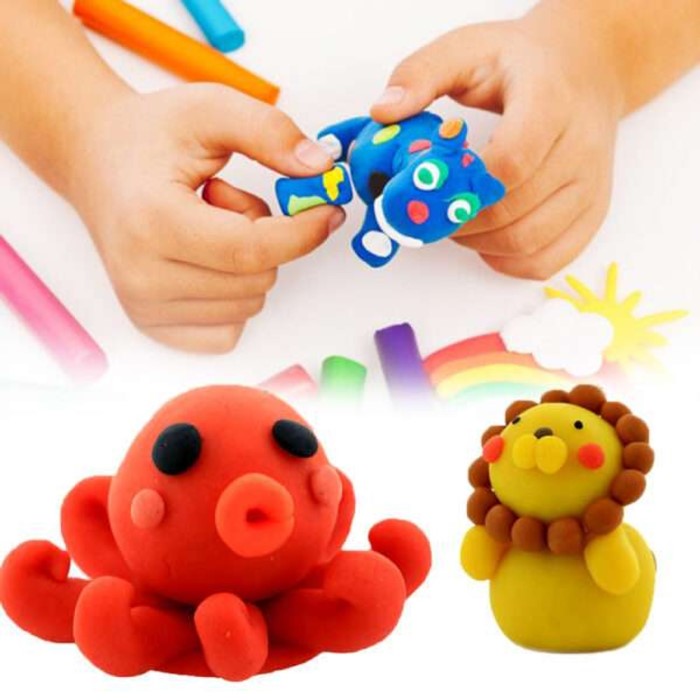
As you embark on this artistic journey, ensure safety by choosing non-toxic clay and supervising younger children during activities. With the tips, ideas, and insights provided in this guide, you are now prepared to foster the artistic potential of your young creators. So gather your materials and get ready to inspire hours of imaginative play! The joy of working with clay will create lasting memories and essential skills that your children will cherish as they grow.
